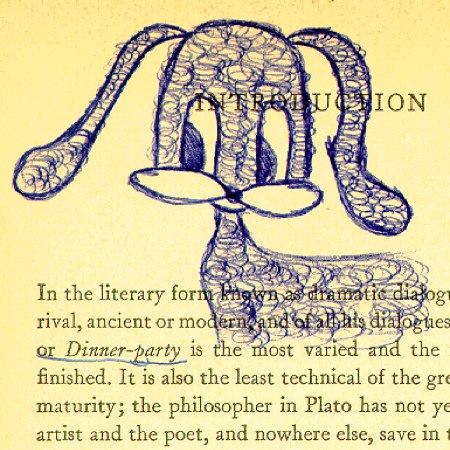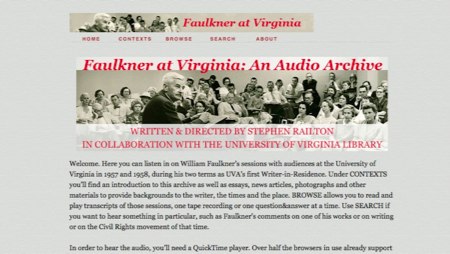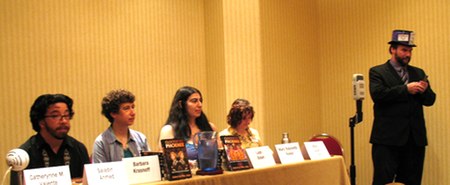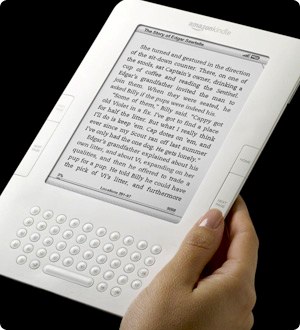Nick Pedrini has already shown us how Post-It notes can be digital art. As it turns out, they can make great cinema too.
Control in Games
Stacey Mason
Tof Eklund recently wrote a thoughtful review of Flotilla, a space battle strategy game, for Play This Thing. We previously met Eklund at the Futures of Digital Studies conference a few months ago where he gave a fascinating presentation on “computer board games.”
The review is pretty straightforward until the endm when a passing comment caught my attention and served as a useful reminder of what drives us to games:
Flotilla has a few rough spots, and isn't going to satisfy anyone's fantasies of acquisition or control, but that's part of what makes it enjoyable as a game.
Fantasies of acquisition and control. How much of that do we actually see in games? The more I thought about it, the more this seemed the central driving focus behind entire genres: “God games” like Sim City, real-time strategy game, games in which you care for an animal or creature (e.g. Nintendogs, Pokemon). These games seem to be everywhere.
The pleasure of other genres (like the RPG or platformer) doesn’t depend entirely upon a sense of control (except for games where the pleasure comes from interacting and manipulating the world, e.g. the Grand Theft Auto series), but there’s certainly a case to be made that most video games fulfill a drive for mastery and domination.
Kingston Roundtable
Mark Bernstein
Janneke Adema offers a trip report from a recent roundtable meeting at Kingston University about the Future of Electronic Literature, focusing on a keynote talk by Jay David Bolter.
For a new media theorist, Adema seems strangely fond of the ghastly “snapshots” link annotations with their obnoxious pop-up thumbnails. A reader who is interested in “literature in the era of social and locative media” already knows what Wikipedia looks like.
“What unites creative practitioners and researchers," Adema argues, "is their exploration of the word and the abstract character of language and its materiality in different media in an experimental practice. The main question remains: why isn’t this work part of a more mainstream platform?"
The question answers itself: experimental practice in different media is, by definition, outside the main stream. If it were part of a more mainstream platform — the stuff that Pepsi does, the stuff my 13-year-old niece does — it wouldn’t unite creative practitioners and researchers in an experimental practice.
Bolter’s key concern here, in Adema’s account, is the centrality of literature in the humanities. At the Future of Digital Studies last Winter, he memorably asked whether, in the future University, the English department will decline to the place Art History occupies today.
Thanks, Laurent Sauerwein, for the tip!
100 Days: Checking In
Stacey Mason

Carianne Mack Garside, Day 55: presence
With the 100 days project just over halfway done, the participants are still going strong, and so far we’ve seen some really exciting work.
John Timmons is leading the project this year with a daily film clip. The production on these clips has been astonishingly good; many offer intriguing visual effects coupled with great sound overlays. The pieces tend to evoke a vague, indistinct but real emotion—the perfect starting point from which the other works can draw inspiration.
Steve Ersinghaus is writing short stories, and I find that his work most directly correlates to Timmons’ clips (of course, the links help too). Since he is not leading each day this year, I’ve found it fascinating to read his work after watching Timmons’ clips to examine how the piece was influenced. I picture the creative process that went into translating the clip to a story, fully aware that my version might be somewhat romanticized.
Many of our favorites from last year are back. Susan Gibb, who did hypertext fiction pieces last year, is doing flash fictions, and some of them are very good. Carianne Mack Garside returns with her excellent watercolors.

J. Nathan Matias, Day 23: Nick Lowe’s summary of Aristotle’s Poetics
There are some interesting new projects this year as well. Nathan Matias is posting 100 summaries, most of which are expressed through Tinderbox and then shared online through Emberlight . Nathan writes, “Summary is the cornerstone of intellectual life […] Some day, I plan to teach students how to think and write. Their future will depend on my explanations of summary, and my ability to assign grades to their work. Their education and life prospects may well depend on my understanding of the simple summary.” His approach to demonstrate these arguments through spatial hypertext showcases the form’s ability to draw connections and correlations, and some of the ways spatial metaphors have organized themselves into a kind of grammar.
The most recents entries have been many artists’ best work. If this trend continues, I can’t wait to see what the rest of the summer brings.
Listening To Students
Stacey Mason

Photo: Catherine C. Marshall
Gene Golovchinsky suggests that we listen closely to students if we want to understand eBooks. Golovchinsky reports on the story of a teacher who observed students’ use of eReaders, and offers students’ opinions that printed textbooks allow for better annotation.
Wojcicki cites an Internet analyst who offers the opinion that the students “…are just wrong. … just plain wrong. They don’t know because they can’t even conceptualize what is coming.” The implication is that these devices will in fact revolutionize the textbook market, but the students are not able to understand that.
Students do understand their own work practices and can offer a better understanding of annotation practices. This understanding should lead to better reading and annotating software. However, the unnamed internet analyst is probably right too. Golovchinsky writes,
Electronic reading devices will only be successful if their designers pay attention to what students do with textbooks, and design tools to support and augment their work practices. If that is done well enough, then the analyst’s prediction will be correct; if, however, the hardware and software combination fails to support active reading well, then students will continue to reject the medium as inadequate to their task.
It’s important to remember that learning doesn’t only come from the text. Several of my courses had online or software textbooks. These “textbooks” were not only texts, but also practice quizzes, linked references, and platforms to connect with other students. If these activities are incorporated into textbooks for platforms like the iPad (perhaps as apps, perhaps as part of a larger program for handling works like this), the analyst’s prediction will be true, regardless of the annotation capabilities of the software.
Of course, this isn’t an excuse for the lack of decent active reading programs available, but being able to highlight or mark up a page is not the only thing keeping students from accepting eBooks. The real issue is that eBooks are still trying to limit themselves to imitating paper.
Faulkner
Stacey Mason

New online recordings of William Faulkner discussing his work have been posted by the University of Viginia. The archives contain around 28 hours of readings, interviews, and student questions from 1957 and 1958 when he was UVA’s Writer in Residence. The site also features essays, articles, and photos of the writer.
A recent article in Newsweek reveals the potential importance of the recordings. Quoting from Faulkner in the University, Malcolm Jones shows how transcriptions of Faulkner’s thoughtful drawl can’t quite capture his answers.
Faulkner: Not at all. I was trying to talk about people, using the only tool I knew, which was the country that I knew. No, I wasn’t trying to—to—wasn’t writing sociology at all [audience laughter]. I was just trying to write about people, which to me are the important [. . . ]. Just the human heart. It’s not—not ideas. I don’t know anything about ideas, don’t have much confidence in them.
What I couldn’t do, reading that book, was hear how he said what he said. There was no intonation, there were no pauses, there were only the words on the page, and while I devoured them, that was as far as I could go […] I didn’t know what I was missing. Now I do.
Summer Reading
Stacey Mason
If you’re not already as overwhelmed as I am with a stack of books to read before the fall, The Millions has published a list of the most anticipated new titles for summer.
Tone Police
Stacey Mason

In a stroke of genius on the level of the SarcMark, a new Outlook plug-in can track the tone of your emails and alert you to words with emotional charge or ambiguous connotation.
And like the SarcMark, the issue could be avoided with a bit of better writing.
Oxford Comma
Stacey Mason
Grammar nerds on both sides of the debate (and the Atlantic) have pretty strong feelings about the serial or Oxford comma. Some musicians, it seems, feel strongly about not having strong feelings about the Oxford comma. However you feel about it, Lacrimae Rerun presents some humorous cases in which it’s useful for clearing up ambiguity. Good for a light chuckle and a grammar school refresher.
“In Paris, I met the filmmaker Jean-Luc Goddard, a gourmet chef, and a collector of vintage pornography.
Non-Western Fantasy
Stacey Mason
Last weekend’s Readercon hosted a panel on Non-Western Cultures in Fantasy. Though all of the panelists identified themselves as “western,” they wrote about cultures into which they had not been born. How can one invent a non-western culture without falling into the colonialist or orientalist traps?
Panelists warned that writing was always about “being outside ones own skin,” but that there is a difference between exploring Otherness and exploiting it. With Edward Said’s Orientalism as a starting point, the panel focused on how to write about Otherness without reducing a culture into stereotypes or assumptions. Darrell Schweitzer noted that writers “are always writing about the Other; the key is to not suck at it.”
To this end, the group offered several tips:
- If you’ve only been somewhere a few times, it’s easiest to write from an outsider’s point of view. While this is certainly a valid point of view, be mindful of how you are exoticisizing or reducing the values of that culture.
- Be aware of the limitations of your knowledge. Don’t assume to know more than you really do.
- Read works written from within the culture you’re studying, preferably in the original language.
- If at all possible, spend some time immersed in the culture you’re writing about. Even if you can’t travel to another country, spend time interviewing people and asking them for their stories.
Nalo Hopkinson stood out as a bright spot on the panel. As the panel dove into anecdotes on how western and non-western cultures were different, she reminded us to not always focus on the differences between us. She commented that one of the things that irritated her was being approached and told that somebody could never write about the same issues she could, as they could never write from the point of view of a black woman. She reminded us, “you may have never been black or never been a woman, but you know the joy of biting into a fresh piece of fruit. Remember that we have more in common than we don’t.”
Hopkinson observed that often when people research another culture for their writing, they aren’t searching for the value of that culture’s beliefs; they’re looking for a way to avoid offending people. She assures writers that “there will always be people mad at you, people who don’t like your work. You must find your own moral compass as a writer.”
Readercon
Stacey Mason

Readercon 2009 reading for Clockwork Phoenix 2. Clockwork Phoenix 3 debuted at this year’s Readercon; editor Mike Allen at right. Photo: Michael Curry cc
Last weekend’s Readercon brought writers, book lovers, and small publishers together to discuss the state of, well, writing and publishing. As Mark Bernstein noted, the conference culture expects that you are a serious reader. Though this culture keeps Readercon free of wannabe panels on “how to find an agent and get published,” it also means that it might be less accessible to casual readers. Still, amidst reports of gender discrepancies among readers, I was happy to see a roughly equal gender spread (however, the one SF panel I attended was woefully male-heavy).
Panels offered a glimpse into the publishing world that —for the most part—seems to be adapting well to the changes in to the book market despite continuing reports that the sky is falling. If even the small presses are doing fine, where is the gloom and doom coming from?
According to several of the panels, the problem is not with the writers or publishers, but with the supply chain: the distributors, wholesalers, and retailers. One publisher commented that they’d had three distributors go out of business in the past year. One panel explored not only what a market might look like without today’s economy entirely, exploring economic approaches beyond the pay-per-copy system.
The digitization of books was heavily felt throughout the conference. Even with the collapse of the supply chain, small presses are able to produce digital books at very low cost for sale through Amazon or directly to the customer. Many publishers reported record eBook sales, though most agreed that formatting is a problem. An additional concern seemed to be the lack of instructions on how to digitize a book correctly, which explains some of the strange page layouts and linking systems I’ve seen on some of the works I’ve downloaded recently.
Though a panel by the delightful Cecelia Tan revealed that much of the work previously done by publishers has shifted to the author (copy editing, proofreading, promoting) a couple of writers in the audience pointed out that they liked having such control over the marketing of their books and did not mind paying for it out of pocket or through time investments. As Tan notes, with the larger publishers, books were rarely getting this kind of attention anyway, and the writers would pay in sales.
And while we’re on sales, the exhibition area was exquisite. It combined everything I love about small bookstores—knowledgeable staff with friendly, personable service, who have actually read most of the books they sell—with the buzz and excitement of a convention. My main caution to anyone thinking of attending next year is to withdraw an allotted amount of cash ahead of time, because the vendor exhibition will call to you, and (quaintly) none of the vendors I spoke with accepted credit cards.
Touching Stories
Stacey Mason
Touching Stories for the iPad looks like something between an interactive video and Alice for the iPad . The app consists of four short videos that call upon the viewer to interact with the iPad to change the course of the narrative.
Though the format looks as though it provides little more than the interactive cut scene, I’m excited to see new forms of interaction appearing in these types of works. In three of the four stories, the reader/viewer takes the role of the player in a God game, her extradiegetic actions affecting the characters and events within the story. Shaking the iPad, for example, results in an earthquake in the story world. In the fourth story, the player character begins tied up in the trunk of a car and must hit the screen to kick the door open and swipe the screen to untape her mouth. Even though the interactions are functionally the same, something about this last example not only feels more like the “press a to not die” interactive cut scene, but it also seems more awkward.
The answer here seems to lie in the player-character’s existence within the story world; we’re more likely to accept our role as a God character straddling the line between existing inside the story and out than to be forcefully planted within the story world.
Touching Stories is available from the App Store .
"Touching Stories" - iPad Demo + Behind The Scenes from Tool of North America on Vimeo.
Nielsen On Reading Speed
Stacey Mason/Mark Bernstein

Jakob Nielsen reports findings on a study comparing reading on a tablet, PC, and in a book. The study found that subjects read significantly faster from a book than on a tablet and also that they preferred reading on a tablet to reading on a PC.
Nielsen’s report appears to overlook potential biases in testing. All the subjects were familiar with codex books, which they have used for decades, but none had used Kindles or iPads for decades. Were the subjects accustomed to using an iPad or Kindle prior to the test? The report mentions that the PC text was administered in a typical “office” type setup whereas the tablet testing was done in a comfortable armchair. This alone is reason to prefer reading on a tablet; would preferences have been different if the PC testing had been done on a laptop with the subject relaxed on a sofa?
Although the study is already being widely reported as proof of the codex’s superiority to eBooks, the overall effect is trivial. Twenty four subjects read short stories by Ernest Hemingway on various devices. The mean reading time was 17.3min. iPads were about 6% slower and Kindles were about 10% slower — the difference among devices is not statistically significant but the different between electronic devices and print it. But the difference amounts to 84 sec/story. That means you might take an extra 20 minutes to read Hemingway”s 1927 collection, Men Without Women . If you want to read all 70 Collected Stories, including posthumous works and juvenilia, you’d better allow an extra ninety minutes.
What will be interesting, I think, is whether the new 300dpi display of the iPhone 4, once it becomes available for book-size devices, further improves reading speed.
Hello Worlds
Stacey Mason

Matt Kirschenbaum has posted his essay “Hello Worlds (why all humanities students should learn to program)” on his Web site. The essay brings up the aesthetics of beautiful code and the irony that programming code, though inscrutable to the programming illiterate, is also inscrutable to the machine.
Kirschenbaum argues that requiring students to learn programming provides the same benefits as learning a foreign language: the ability to analyze and question existing translations without being dependent upon a text which is one level removed from its author’s creation. Especially for scholars of digital texts, understanding the mechanisms that drive the art surely provides a deeper understanding and closer analysis.
He writes,
Such an education is essential if we are to cultivate critically informed citizens — not just because computers offer new worlds to explore, but because they offer endless vistas in which to see our own world reflected.

National Dr. Seuss Memorial, Springfield MA. Photo: Bill Hector Weye.
Jason Kottke points to an interesting statistical analysis of Shakespearian works that estimates how many words the poet knew Apparently. Shakespeare’s word list spans over 3 times the average vocabulary of an English-speaker, or roughly 66,534 words.
Of course, he probably invented good number of those words. I wonder how this might compare with Dr. Seuss
.
Literary Agent Janet Reid returns from the Book Expo America with the feeling that something huge is changing in the way literature is experienced and delivered.
There's an artistic revolution coming.
[…]
I have no idea what it will look like. It will be more than a book because it will be more than text. It will be more than a movie because it will be more than pictures and text.
It will be more than a compilation of things that presently exist. It will be something entirely new.
It will be interactive. It will be visual. It will be electronic. It won't be tactile. Other than that, I have no idea what it will be.
But it's coming.
Storytelling
Stacey Mason
Science fiction writer, ARG writer, and storytelling pioneer Sean Stewart discusses the art of storytelling , asserting that not enough emphasis is placed on the “hardware of storytelling,” or the platform upon which the story is told. Stewart reviews several fascinating examples of stories that straddle the line between games and literature, and he concludes that narrative is shifting toward a dance between author and audience for a shared control over the story.
YouTube Research
Stacey Mason
Michael Strangelove has compiled a very impressive bibliography of important work about YouTube. The works cover subjects from library sciences to identity. (Thanks Jill Walker! )
Oppression and Inspiration
Stacey Mason
On several occasions, as I frustratedly jabbed my backspace button sharply, I’ve thought to myself, “If only I were some troubled soul, trapped and unable to express myself in life! Then, by God, I’d be able to express real emotion!”
Apparently, this might on some level be true, or so Robert Fulford suggests in a recent article on E.M. Forster .
A separate question is the effect on Forster as a writer. Would he have written better novels if the antihomosexual laws had been reformed in the 1890s rather than in the 1960s? He seems to have thought so. On the other hand, fans of Maurice are thin on the ground.
The article recapitulates the fascinating account of the effect Forster’s homosexuality had on his work proposed by Wendy Moffat, who believes that it played a much larger role than academe tends to acknowledge. More importantly, the article raises interesting questions about inspiration as a result of oppression.
